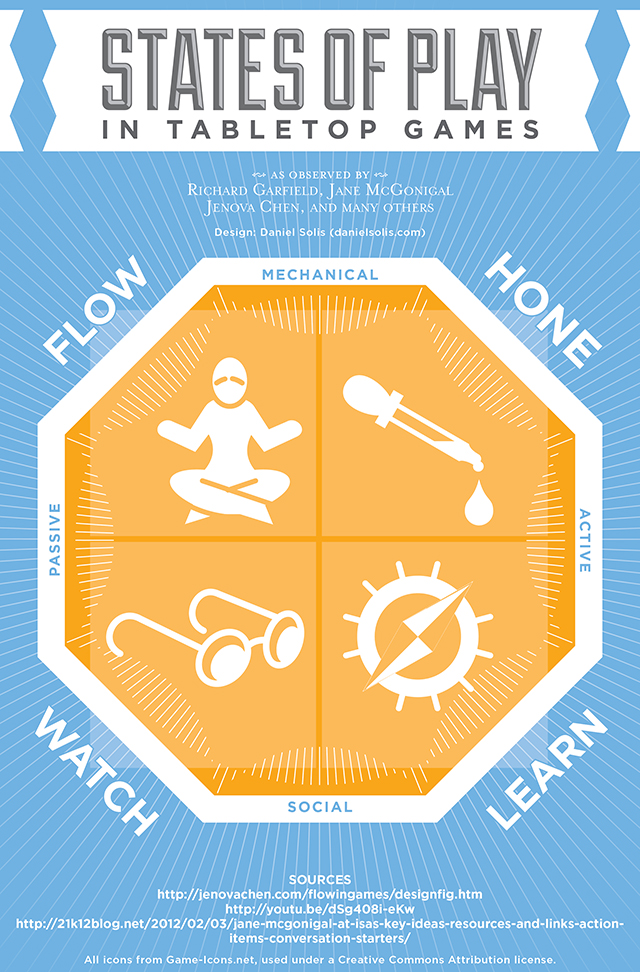
I recently saw this video of Richard Garfield speaking on the subject of luck and randomness in game design. More interesting to me were the four states of play he mentions in passing, but doesn't really dive too deeply into during the course of this discussion. He describes these as a kind of gamer, but I think it's more useful to consider these simply states of mind.
An individual can transition through any of these several times during the course of a single game or even a lifetime. You might even extrapolate this further, identifying cultural trends towards one state over another across generations, but that is outside the scope of this blog post.
Identifying these as states of mind during play are also more practically useful for any aspiring game designers. You can certainly create a type of play, but you can't create a type of player. (If we could, we'd all be selling a lot more games!)
First, it helps to identify two axes along which these states are ordered.
On one axis, we have Passive and Active. In this context, the extreme Passive condition can be described as minimal effort for maximum effect, often characterized by very light, fast, noisy games. By contrast, the extreme Active condition can be described as maximum effort for minimal effect, most often seen in cut-throat zero sum games that take many hours to complete.
Along the intersecting axis, we have Mechanical and Social. The extreme Mechanical condition can be described as a completely solitaire experience between the player and the game, without input or influence from any other players. The extreme Social condition can be described as complete interaction between players with only the thinnest scrim of actual mechanics guiding that interaction.
All that said, here are the four states of play as best I can describe them based on my understanding of Richard Garfield's outline.
- Hone: (Active+Mechanical) Optimizing a single strategy to its fullest extent.
- Learn: (Active+Social) Or "Explore." Testing different methods, finding the boundaries.
- Watch: (Passive+Social) A spectator taking actions simply to see what happens.
- Flow: (Passive+Mechanical) The joy of playing a game you already know how to play well.
Most games encourage two of these states either in gameplay or in the culture surrounding gameplay. For example, Richard Garfield cites Magic: the Gathering as a prime source of Honing, as you try to refine your deck, and Exploring, as you discard one strategy for a completely new play style.
Party games are good for Watching, but you can even enter a Watch state in a hardcore strategy game when you make a random decision because you're not sure what else to do. This is the fun of watching the Jenga tower fall, for example.
I find Flowing is by far the most difficult of states for board games to achieve, simply by the nature of the medium. Video games do this well because you're wrapped in a cocoon of light and sound generally as a solitaire experience. It's hard to completely enter that trance state when you're the one who is unboxing all the components, moving chips, negotiating with other players, and so on.
Still, it's possible. Watch a speed chess game and you're likely to see two players in complete immersion of the Flow state. It generally requires a complete knowledge of the game's eccentricities and often the support of a thriving play culture.
Once you've identified these four states of play, you start spotting the patterns in your own preferences. In my case, I realized that Koi Pond is very much a Flow and Watch game, which may not be interesting to someone looking for a Hone and Learn game.
No comments:
Post a Comment